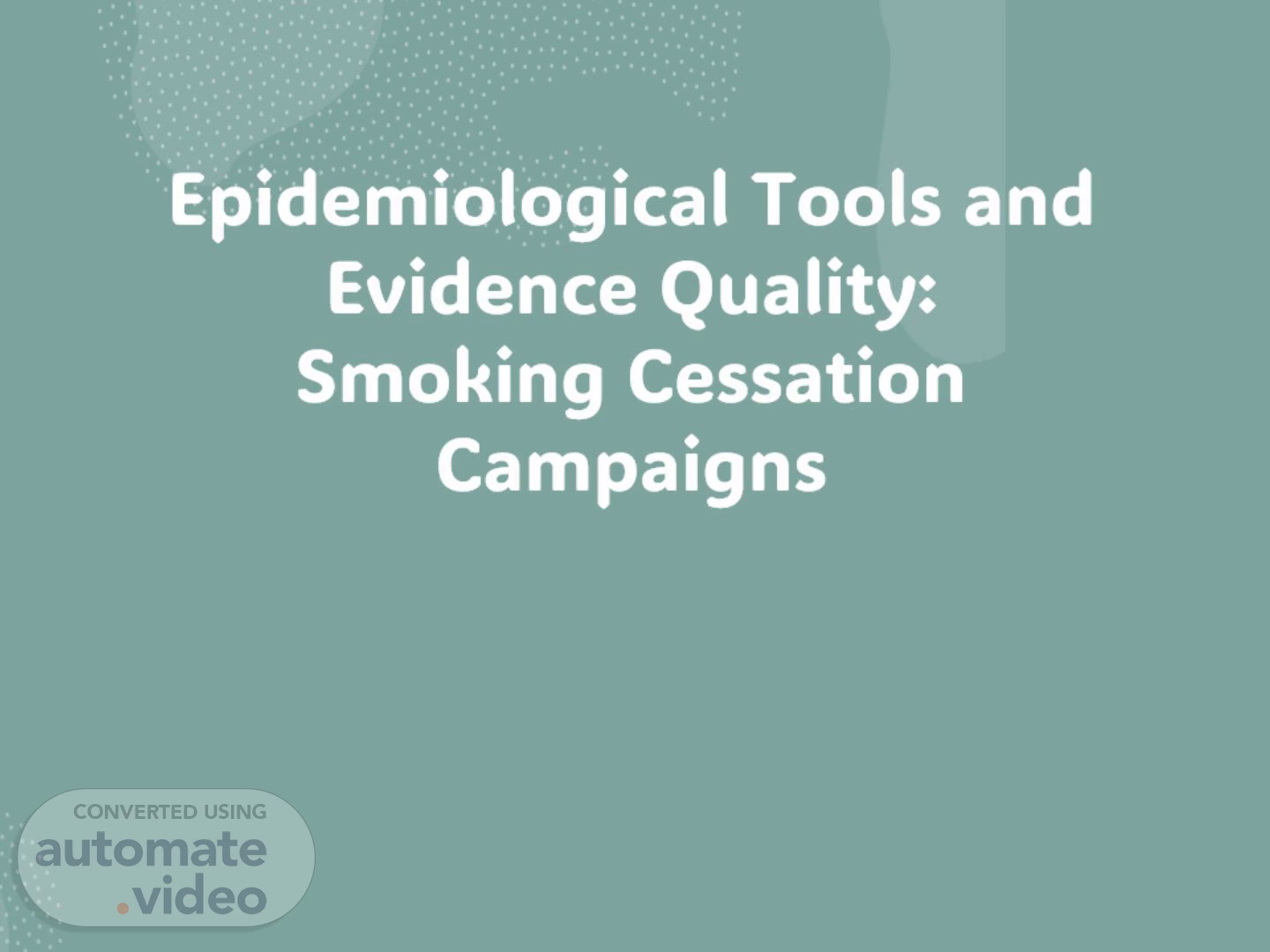
Epidemiological Tools and Evidence Quality: Smoking Cessation Campaigns
Scene 1 (0s)
Epidemiological Tools and Evidence Quality: Smoking Cessation Campaigns.
Scene 2 (7s)
[Audio] Smoking is among the major preventable causes of diseases and deaths globally. This topic was chosen because it has the largest public health burden, and effective cessation programs make a huge difference in reducing the potential for morbidity and mortality..
Scene 3 (23s)
A graph showing the number of cigarettes in different colors Description automatically generated.
Scene 4 (33s)
[Audio] This dependency on tobacco leads to 8 million deaths in the world annually. The major risk factors are lung cancers, cardiovascular diseases, and chronic respiratory illness. High levels of financial burdens due to health expenditure and loss of productivity..
Scene 5 (49s)
[Audio] Sources include PubMed, Cochrane Library, and Google Scholar. Tobacco cessation, Nicotine replacement therapy, Public health intervention. The inclusion criteria are peer-reviewed within the last 10 years, meta-analysis, and systematic reviews.
Scene 6 (1m 6s)
[Audio] High quality of evidence based on R-C-Ts and meta-analyses. Many controlled trials demonstrated that N-R-T and different types of counselling significantly increase quit rates. Longitudinal studies have also realized maintained benefits throughout.
Scene 7 (1m 22s)
[Audio] Recall bias in the self-reported status of smokers. Publication bias is when results are more publishable when positive. This review has a heterogeneity in the study design, having varied populations studied..
Scene 8 (1m 36s)
[Audio] Higher quit rates were associated with N-R-T--, behavioral counseling, and Quitline service. Reduced diseases due to smoking. Economically efficient level of social marketing of quitting..
Scene 9 (1m 49s)
[Audio] The most effective interventions are comprehensive and multilevel. Follow-ups and sustained efforts are what help in maintaining cessation. Success will come in the way of effective public health messaging and accessible resources..
Scene 10 (2m 3s)
[Audio] Conclusion Smoking cessation campaigns are highly illustrative in the lowering of the global burden of disease. Evidence presented in this paper supports indications of N-R-T and behavioral interventions in realizing a sustained quit rate and improvement in population health..
Scene 11 (2m 20s)
References. 1. Fiore MC, Jaén CR, Baker TB, et al. Treating Tobacco Use and Dependence: 2008 Update. Clinical Practice Guideline. U.S. Department of Health and Human Services; 2008. 2. World Health Organization. Tobacco [Internet]. WHO; 2023 [cited 2024 Oct 17]. Available from: https://www.who.int/health-topics/tobacco.